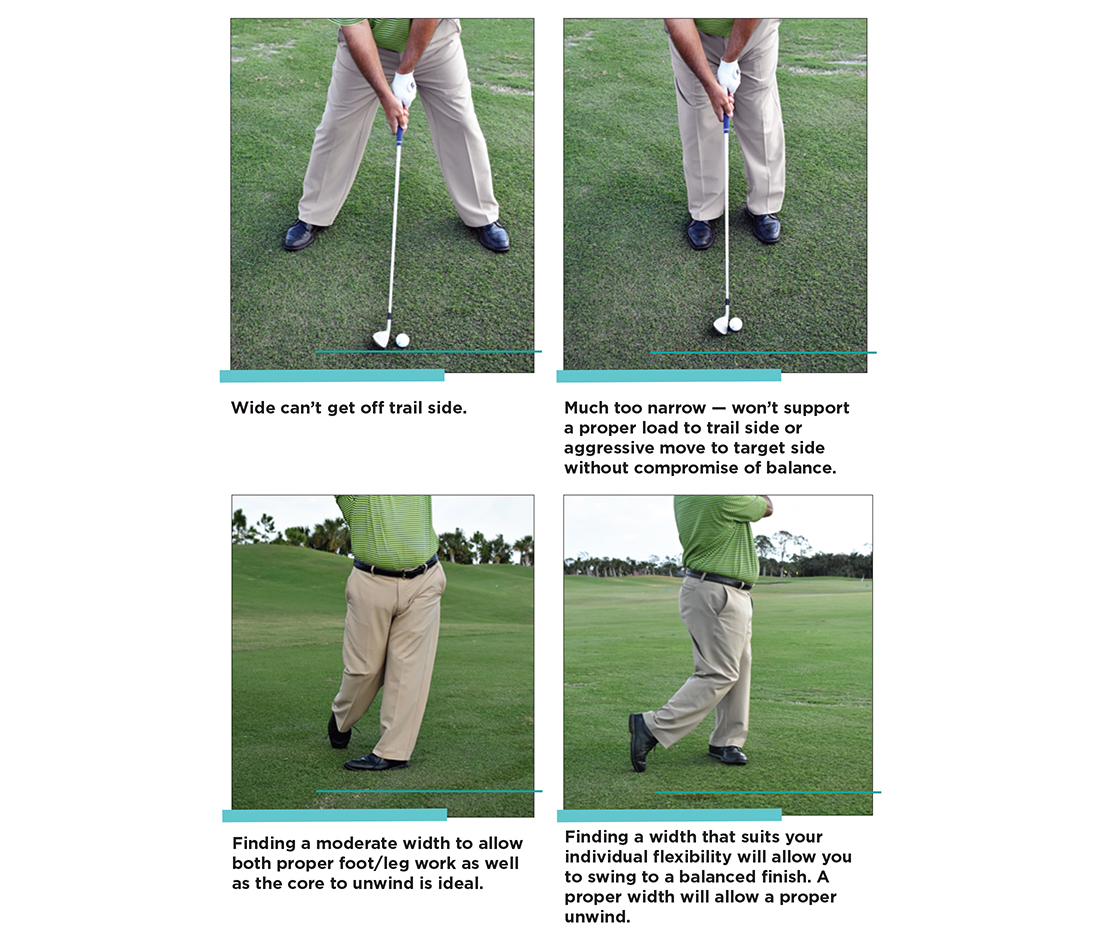Find The Right Width For Maximum Power and Control
By Tom Patri, PGA
I’m a huge advocate of setting up your golf swing’s “launching pad” in a fundamentally sound condition. We hear a lot about the importance of a sound grip. We hear tons about your ability to properly align yourself to your target. We also hear how important a great athletic posture is to perform a successful motion. We often hear about the importance of ball position as it relates to quality of contact.
All those things are certainly important in my coaching for each and every student that comes to my lesson tee. The thing I think is often overlooked by many of my students, only because they don’t fully understand its effect, is the width of their feet at address.
The way you position your feet in your launching pad will dramatically influence how your footwork, leg work, and core performs during the swing motion. I’m a firm believer that great athletes in all sports employ great footwork. Great running backs, great short stops, great point guards, great hockey players and great gymnasts all have wonderful footwork and understand its importance. In golf, because we set up in a static start, we have time to set our feet in a manner that will make our chances of being successful much more likely. Pay attention to your stance width!
Seems simple, right? Then how is it that in a very high percentage of my sessions with the recreational player I very often see the student handcuffed before they put the club in motion. Let’s not let that happen to you.
Here are a few of the faults I see, and a few things to understand so you’ll never fall victim again.

TOO WIDE
I see the wide golfer. He thinks if he widens that base he can rear back and rip that puppy. What he doesn’t understand is when he gets too wide, he does two extremely harmful things. First he hampers the speed the core can unwind, and next, because he is so wide he can never fully get off the trail side, greatly retarding a complete release of mass to the target side. A slow core and a lack of weight transfer results in short and often crooked golf shots. Not ideal.
TOO NARROW
Next I see the ultra-narrow player whose feet are positioned well inside the shoulders. As these players wind up their golf motion and try to load their trail side (get behind the ball), they generally lose their balance because the base is too narrow to support the motion. They now will have the almost impossible task of making a solid strike.
It’s not like we have never heard the old school adage that your base should be shoulder width. In general terms, I agree. However, if I were to take you to Golf Graduate School I’d have to educate you that in terms of your personal width, several factors may have to be tweaked. Trial and error is an acceptable learning format. Your personal width will be affected by a few factors.
- Your individual flexibility (hamstrings, hip flexors, quads, and glutes) will play a role in how you pivot your lower body, therefore making a custom stance width a requirement for you. Remember, an inch is a mile in golf. Take two aspirin — not the whole bottle.
- Your innate ability to balance yourself as you become dynamic (put the club in motion and create speed). Balance can be improved through drills. Email me at tpatri@mindspring.com — I’m happy to send you information about my TPGOLF Balance Board, a wonderful tool that trains both balance and weight shift.
- How adventurous you are in allowing yourself to coordinate an adequate turn while blending it with a shift of mass back and through — I believe turn and shift should be a coordinated marriage.
Learn how to set up your stance width and develop the ability to load the machine — and swing to a fully released finish — and you’ll get better results no matter what club is in your hand. GT
Tom Patri is a Contributing Editor and Golf Tips Top 25 Instructor. He is a former Met (New York) PGA and South Florida PGA Teacher of the Year. He won the 1981 NCAA II National Championship. Tom is based in Naples, Florida and has summer teaching sites on Long Island, Maryland and Saratoga, N.Y. Visit www.tompatri.com to learn more about Tom and TPGolf.
www.golftipsmag.com January/February 2019







